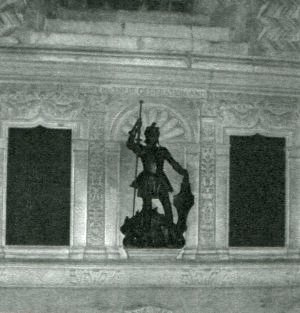War Memorials & the centenary of the first world war - TrustNews March 15
It is thought that there are at least 100,000 war memorials in the UK — the majority of them erected to commemorate casualties of the First World War. Prior to that, commemoration of individual leaders, officers or regiments occurred from the 17th century onwards [Blenheim Palace could arguably be seen as the largest]. The 2nd Boer War in 1899 gave impetus to the idea of commemorating the dead rather than celebrating famous victories. Not only were the British public getting eye- witness accounts from the front but army reforms meant that regiments were now composed of literate volunteers attached to a particular locality which keenly felt the impact of their deaths. There are many plaques and monuments to individual and regimental losses in the imperial wars of the later 19th century and one is often struck by the exotic locations in which local men perished on the edges of Empire.
But of course it was the scale of the loss of life during the 1st World War that changed things. The government took an early policy decision not to repatriate the dead but instead to create war cemeteries near the battlefields. Many of the dead had no known grave or could not be identified at all.
Communities at home felt the need for a physical place where they could express their grief and make acts of remembrance and indeed temporary shrines were set up in many localities during the war.
Once the war was over, there was a general feeling that more permanent structures were needed. In 1919 the Royal Academy organised an exhibition providing advice and suggested designs.
However, decisions were made locally - usually by an ad hoc committee of the great and the good. Memorials were commonly paid for by public subscription.
By 1930 almost every village, town, city, place of work, school, church and social club had a memorial. Many were simple crosses or obelisks. Many were of outstanding architectural or design merit. All are now nearly 90 years old and suffering from the depredations of time .They include statues, stained glass, village halls, parks, hospitals and more idiosyncratic memorials - the Fovant Badges, Sandham Memorial Chapel or the War Cloister at Winchester College.
After the 2nd World War, casualties were frequently bolted on [by adding plaques or further inscriptions] to the existing Great War memorial. There were usually many fewer dead but the changing nature of warfare meant that there was a need for specific memorials such as those for civilian casualties of the Blitz or RAF casualties of the Battle of Britain. Since then of course there have been conflicts such as Korea, lraq and Afghanistan and the National Memorial Arboretum in Staffordshire commemorates casualties since 1945.
To commemorate the centenary of the 1st World War, the government has made £3million available to repair and conserve War Memorials. This money will be administered by the War Memorials Trust, a charity that works to protect and conserve war memorials. To administer the funds effectively, the WMT needs to be able to decide which memorials are most in need of repair. An online database of war memorials has been established - www.warmemorialsonline.org.uk - which holds details of about 20% so far. Members of the public and organisations are invited to record details of their local memorials including their current condition. The website is very straightforward and takes users through the process in easy stages. In Hampshire we have the additional advantage of the website created by Trust members Steve and Jenny Jarvis who have been surveying and recording the war memorials of Hampshire for the past 25 years - www.warmemorials.hampshire.org.uk. They have details of 27 different WWI memorials in Winchester alone!
Members may find it interesting merely to browse these websites but if any of you would like to be involved in recording details or condition surveys or applying for restoration grants, information is available at the Heritage Centre to assist. Civic Voice and the War Memorials Trust have recently been holding workshops on condition surveys which John Stanning and I attended on behalf of the Trust. We should be happy to help with any queries and can be contacted via the Heritage Centre.

Methodist Church, Parchment Street

St Cross Chapel
